The Bisti Badlands "look more like a dreamscape than a landscape. Totem poles of sandstone rocks, or Hoodoos, reach haphazardly into the brilliant blue sky, some so crooked that it’s amazing that even the smallest gust of wind doesn’t topple them over. Resting beneath them sit what only can be described as giant cracked eggs, as if Mother Nature was cooking breakfast only to accidently drop a carton onto the desert’s sandy floor and abandon the shattered shells."
The officially named Bisti/De-Na-Zin Wilderness Area is managed by the Bureau of Land Management. Only hikers can marvel at the fantasy world of strange rock formations – although there are not hiking trails in the true sense. You need very good orientation if you plan to hike in the desert. Be sure to take enough drinking water with you.
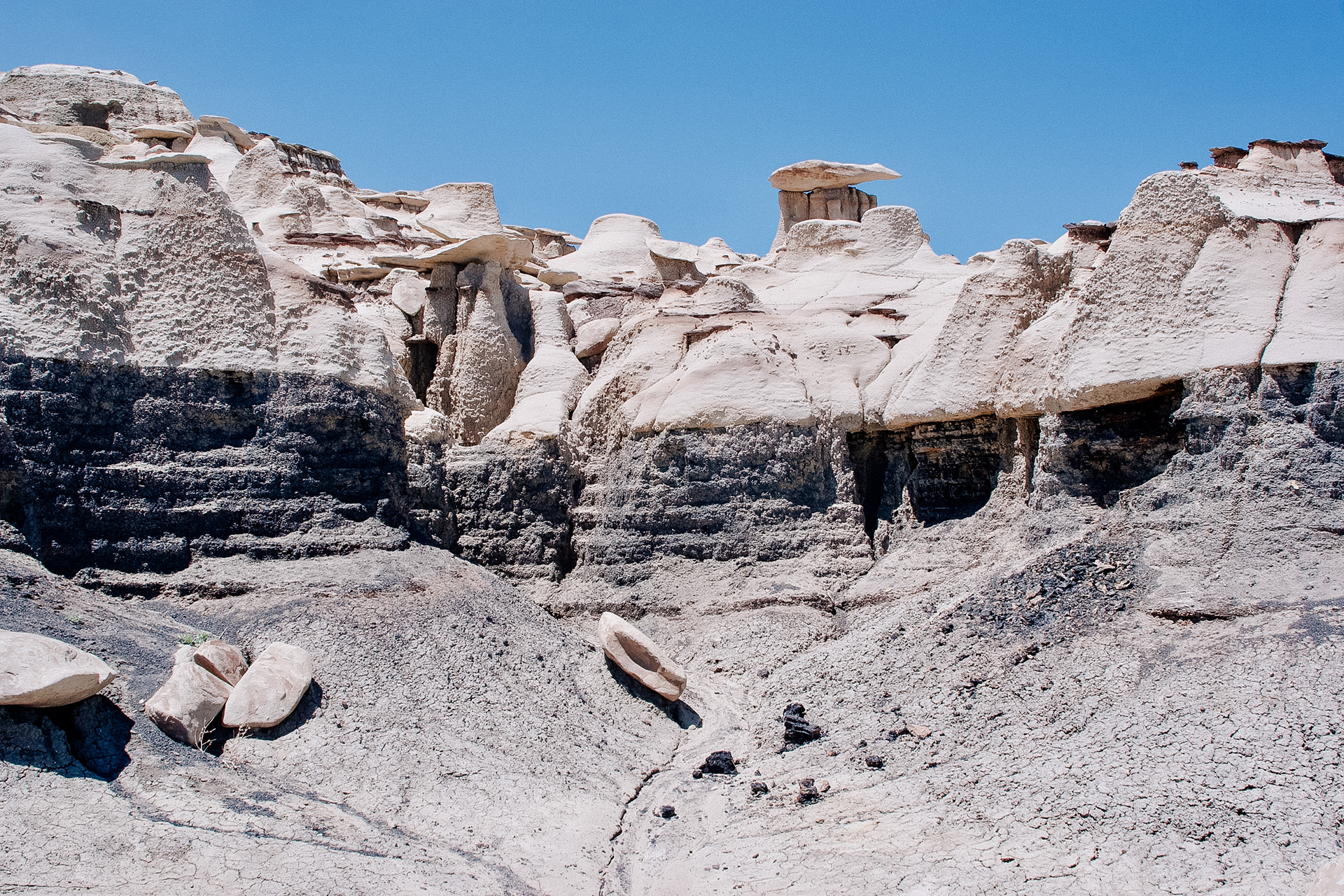
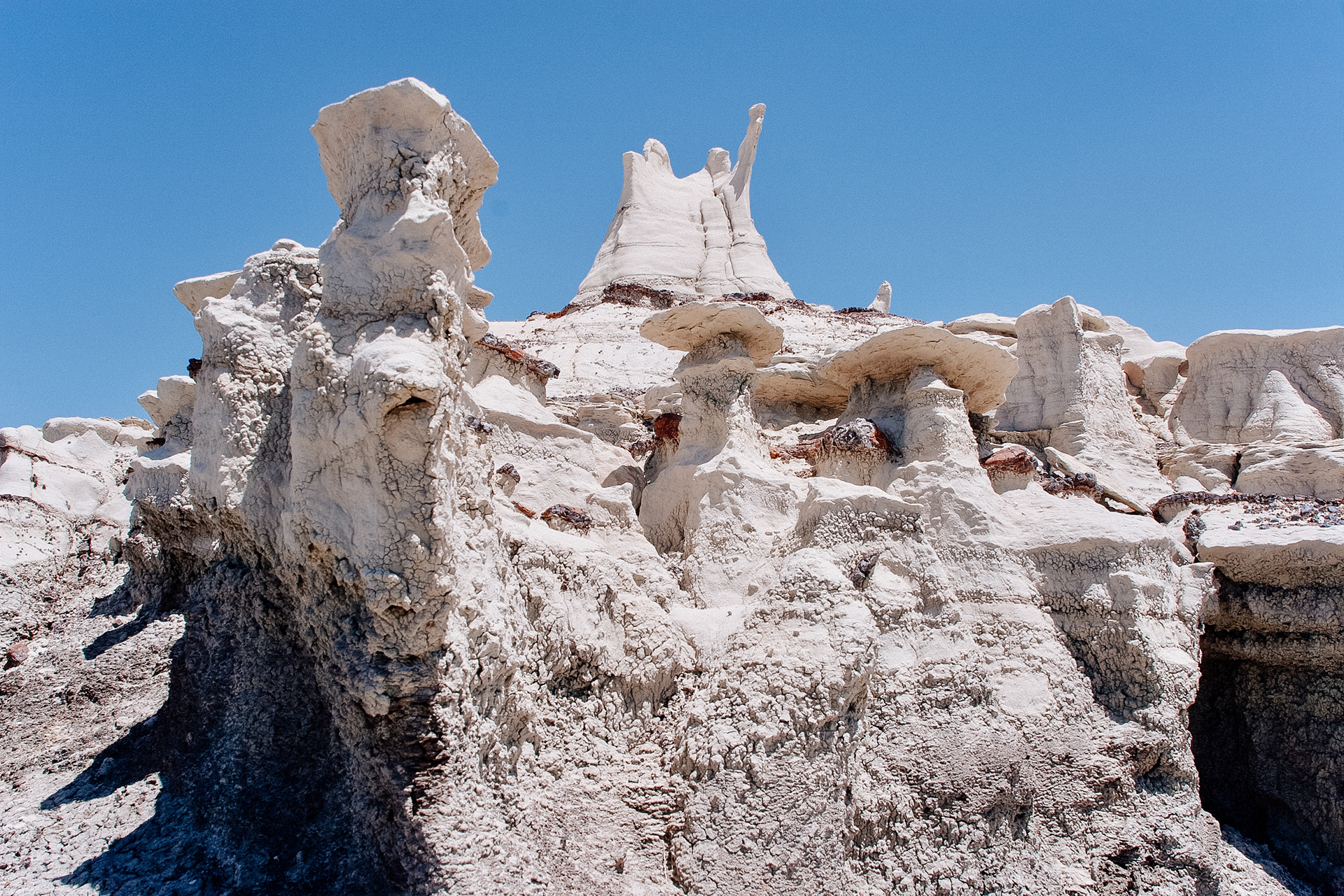
"At one time, the 45,000-acre swath of desert (…) was completely submerged by a sea (…) during Cretaceous Period. As the water receded, layers of sandstone, mudstone, shale and other sedimentary rocks were revealed, (…) only to be carved out by braided streams that flowed through the landscape. (…)"
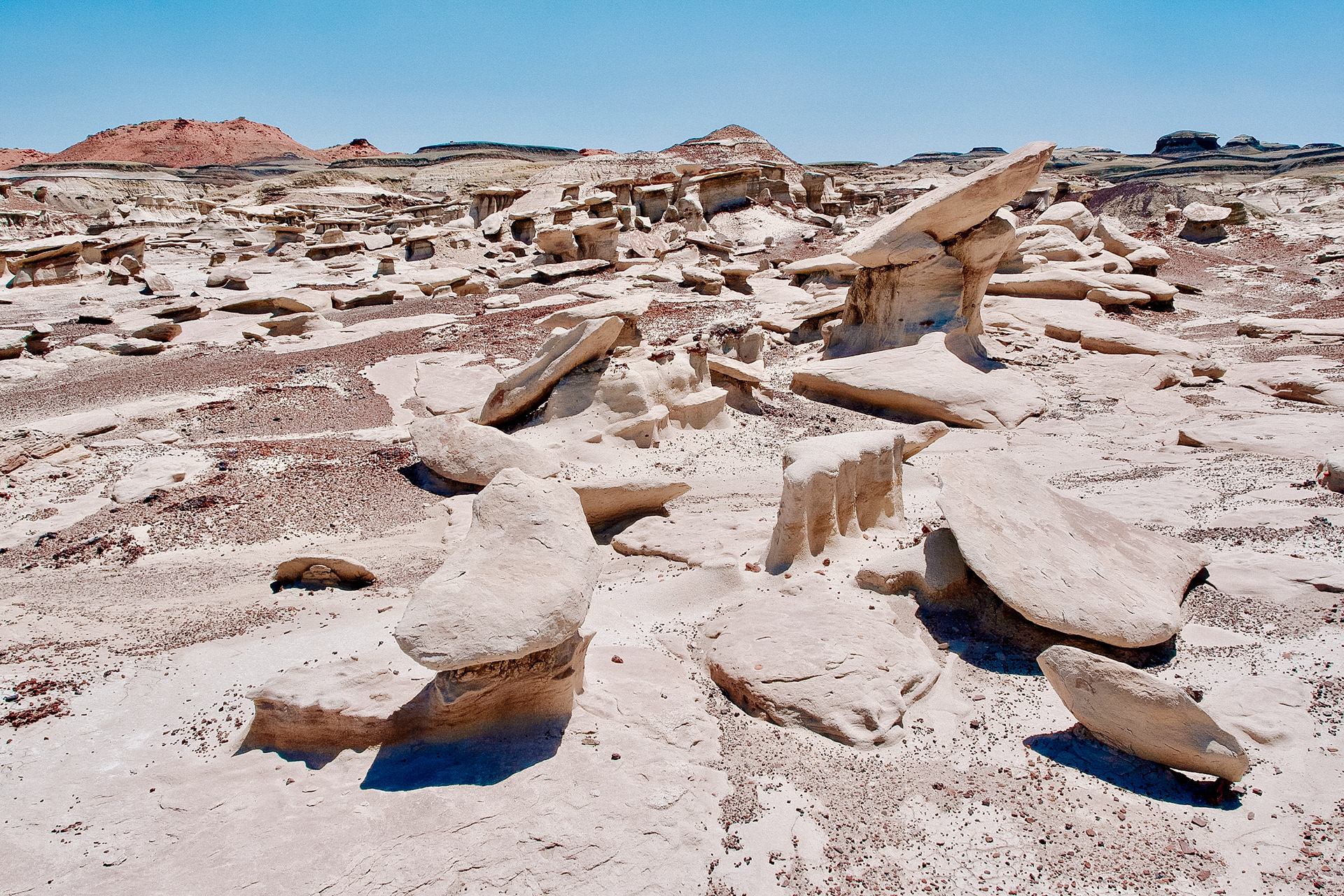
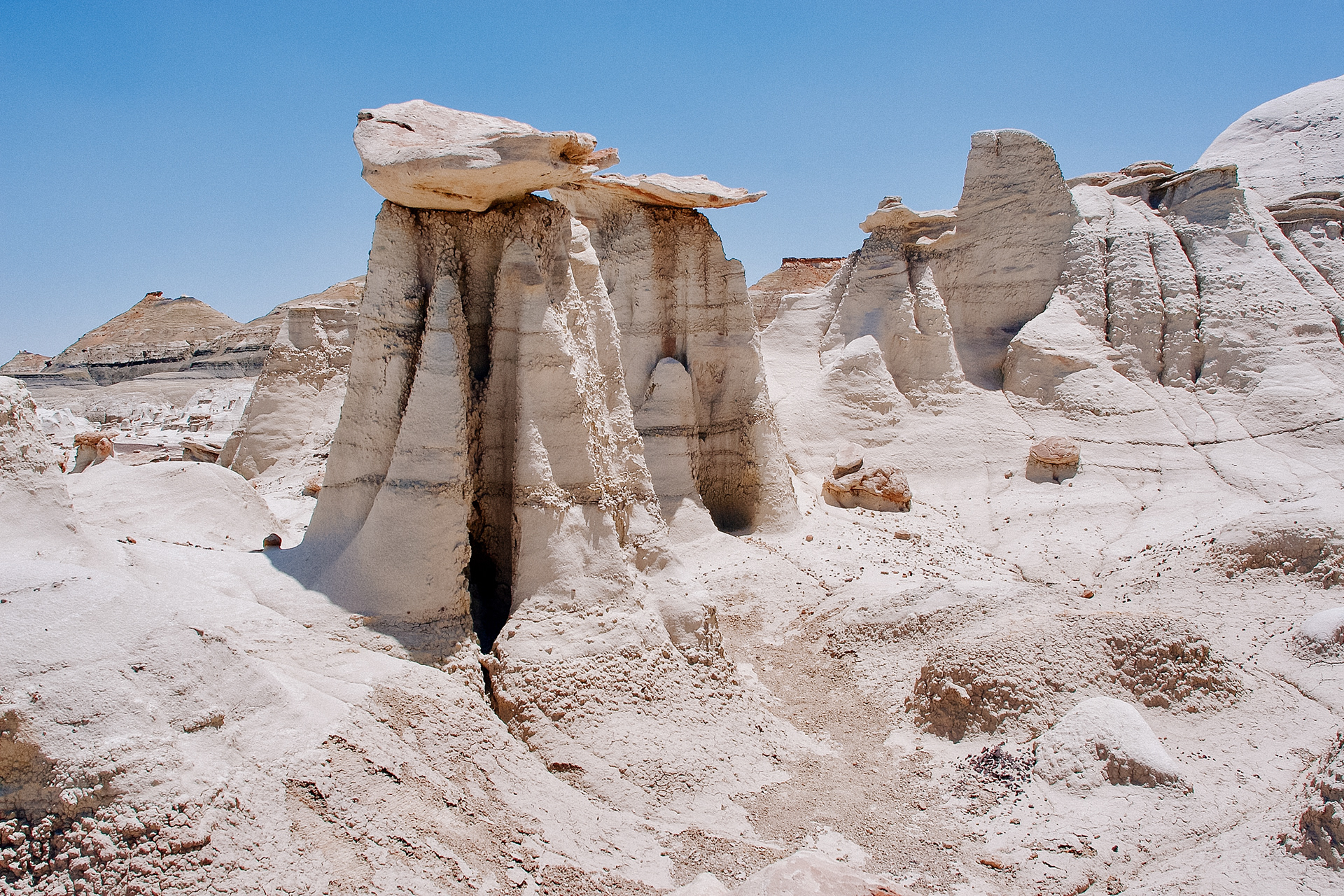
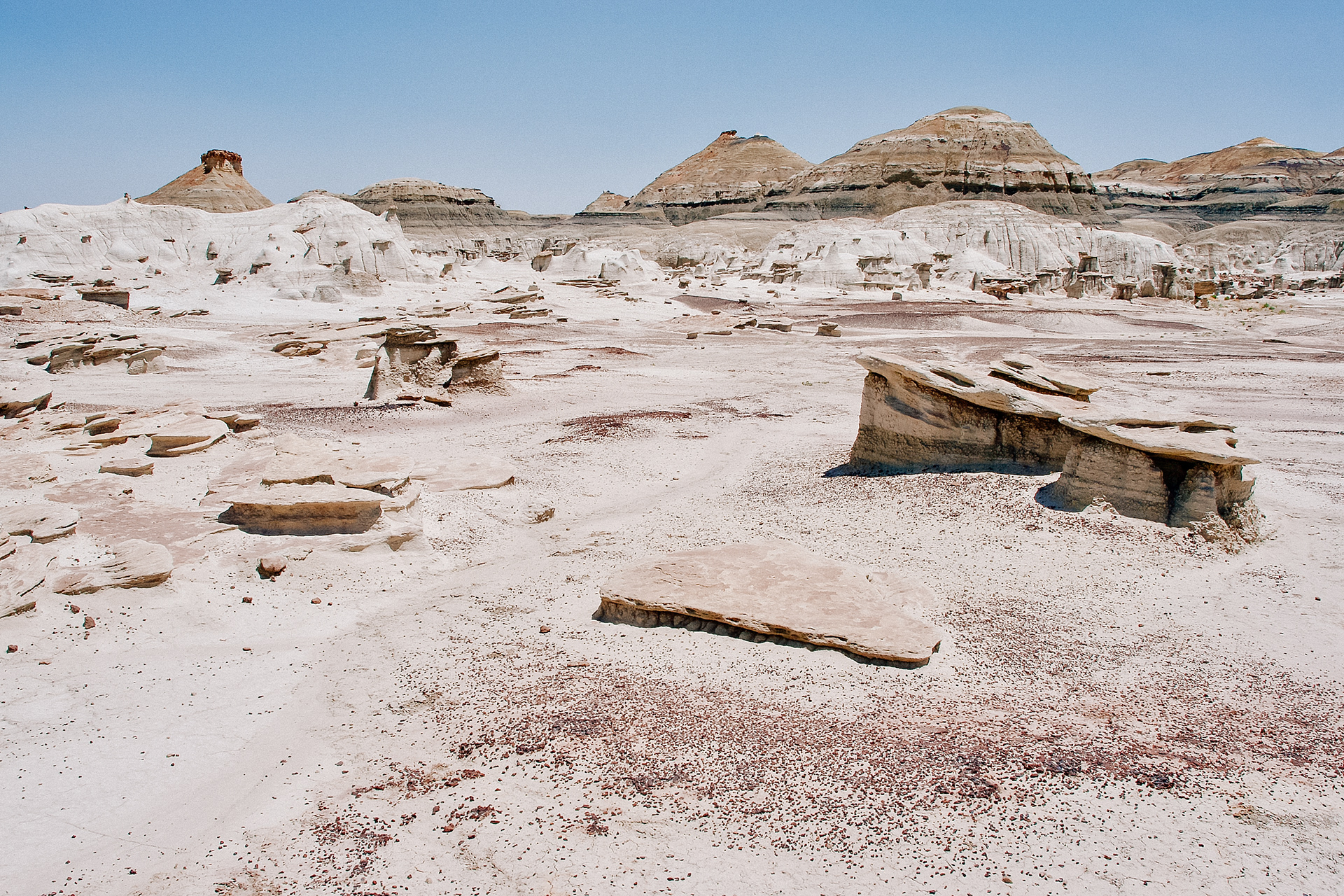
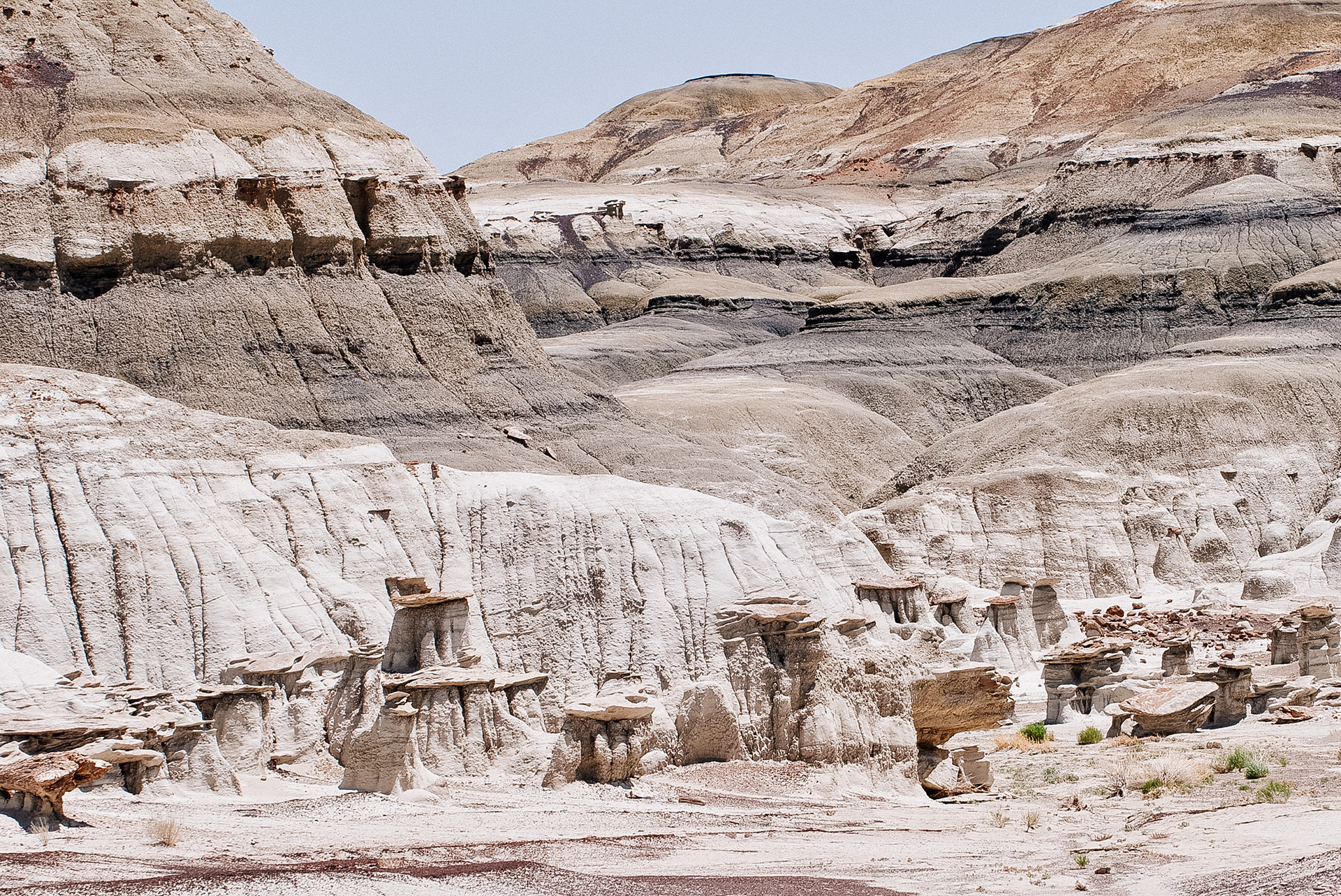
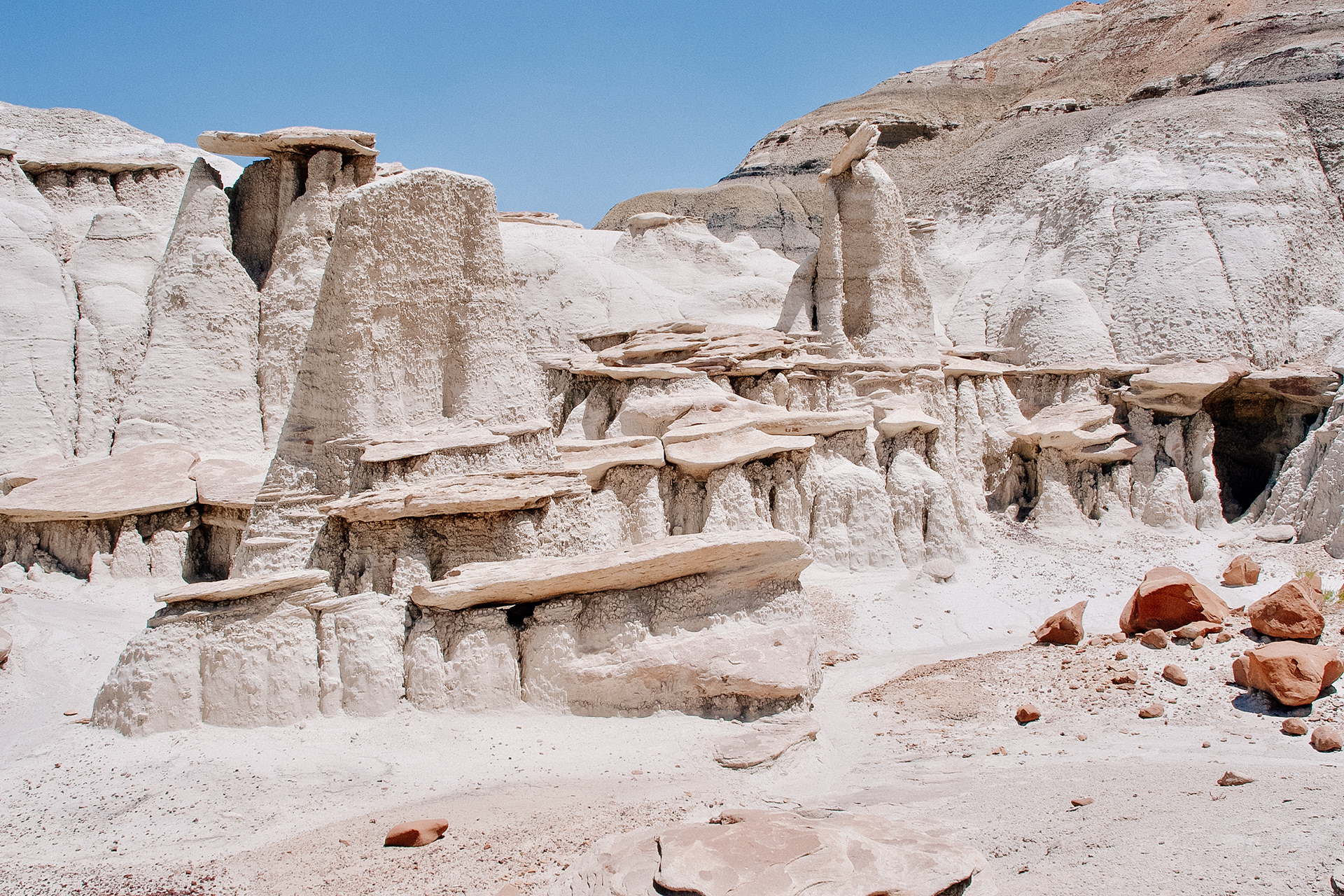
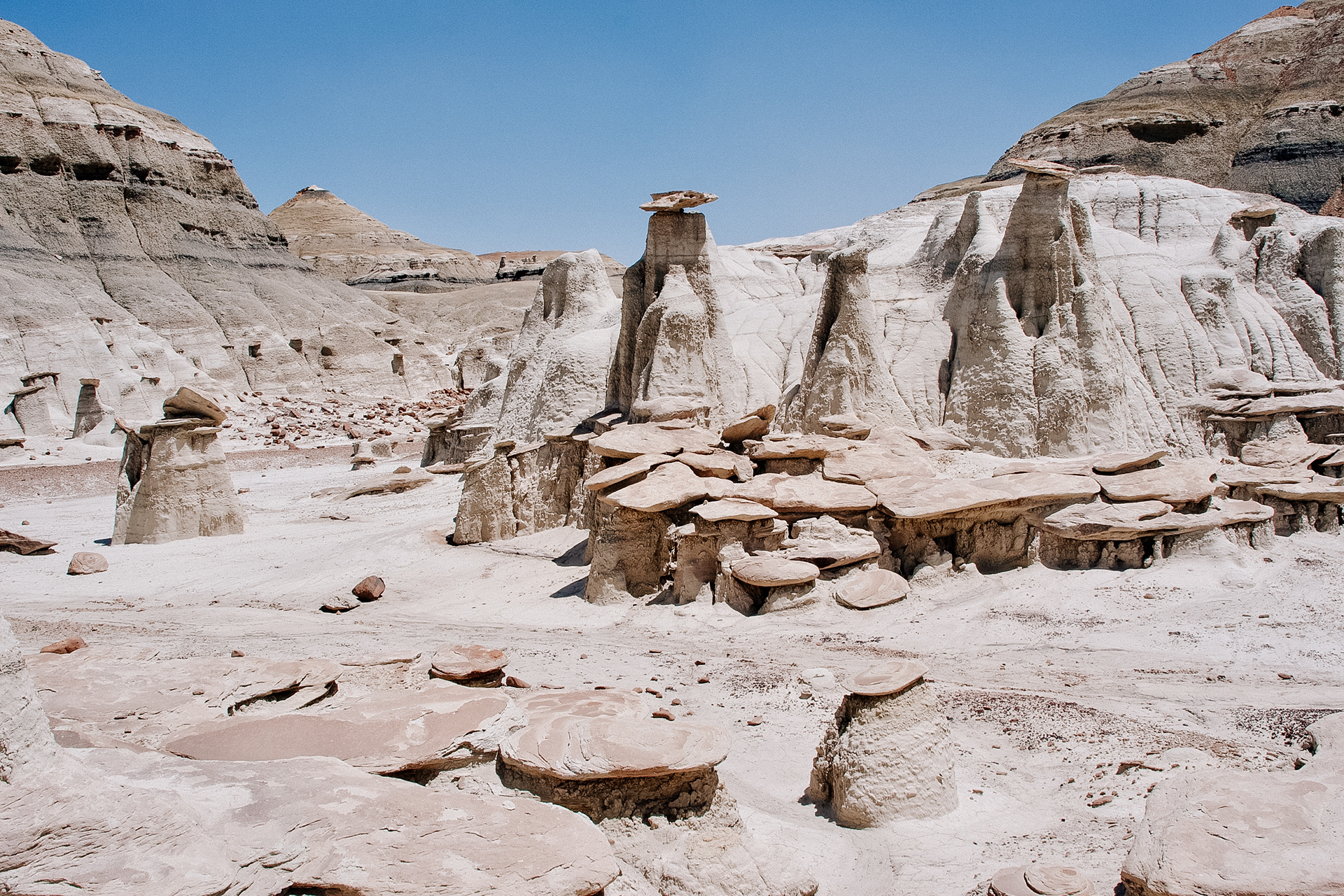
"A petrified forest of juniper and other conifers makes the badlands even more post-apocalyptic. It’s the result of a massive storm that rushed through millions of years ago covering the forest in water and sediment (…)."
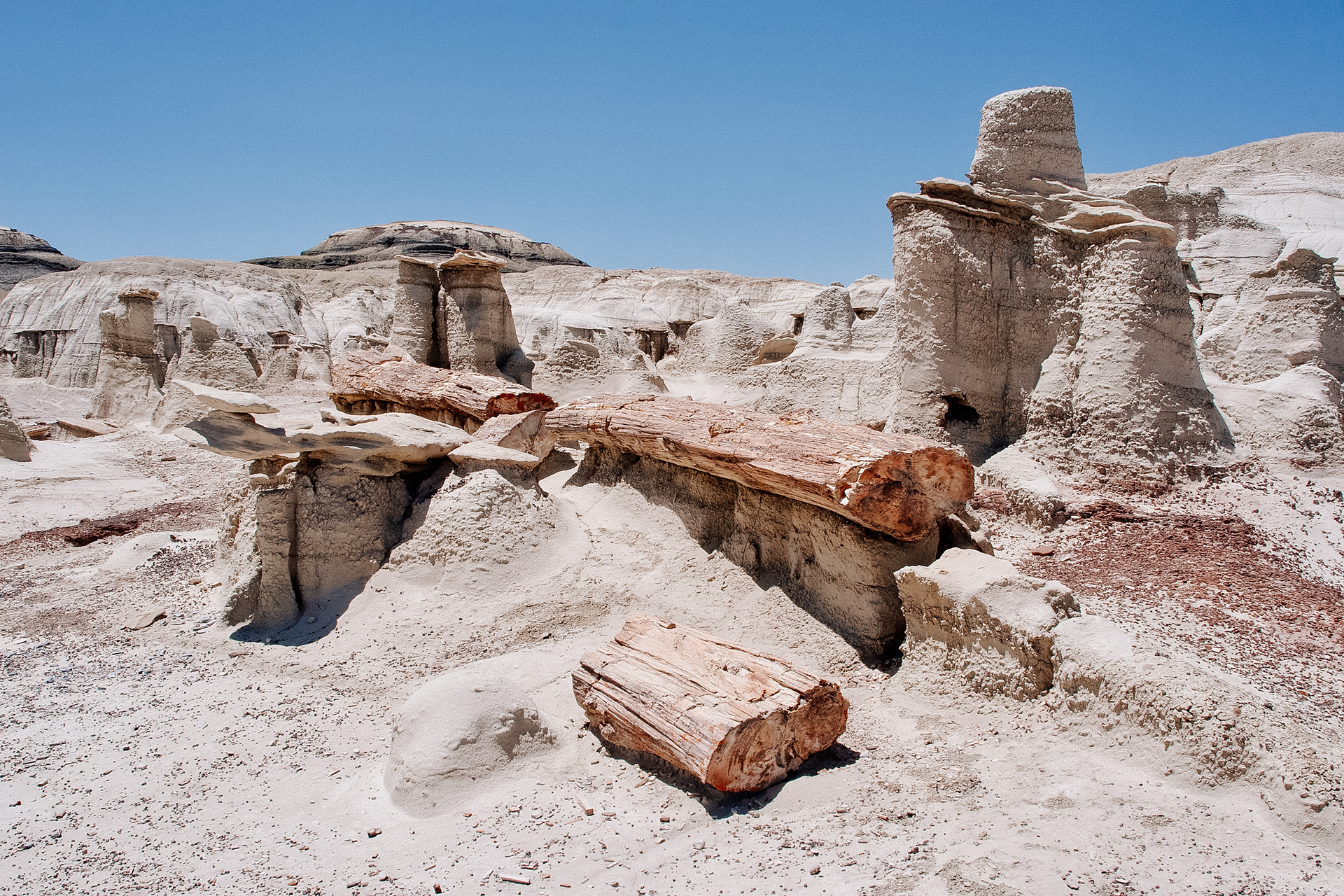
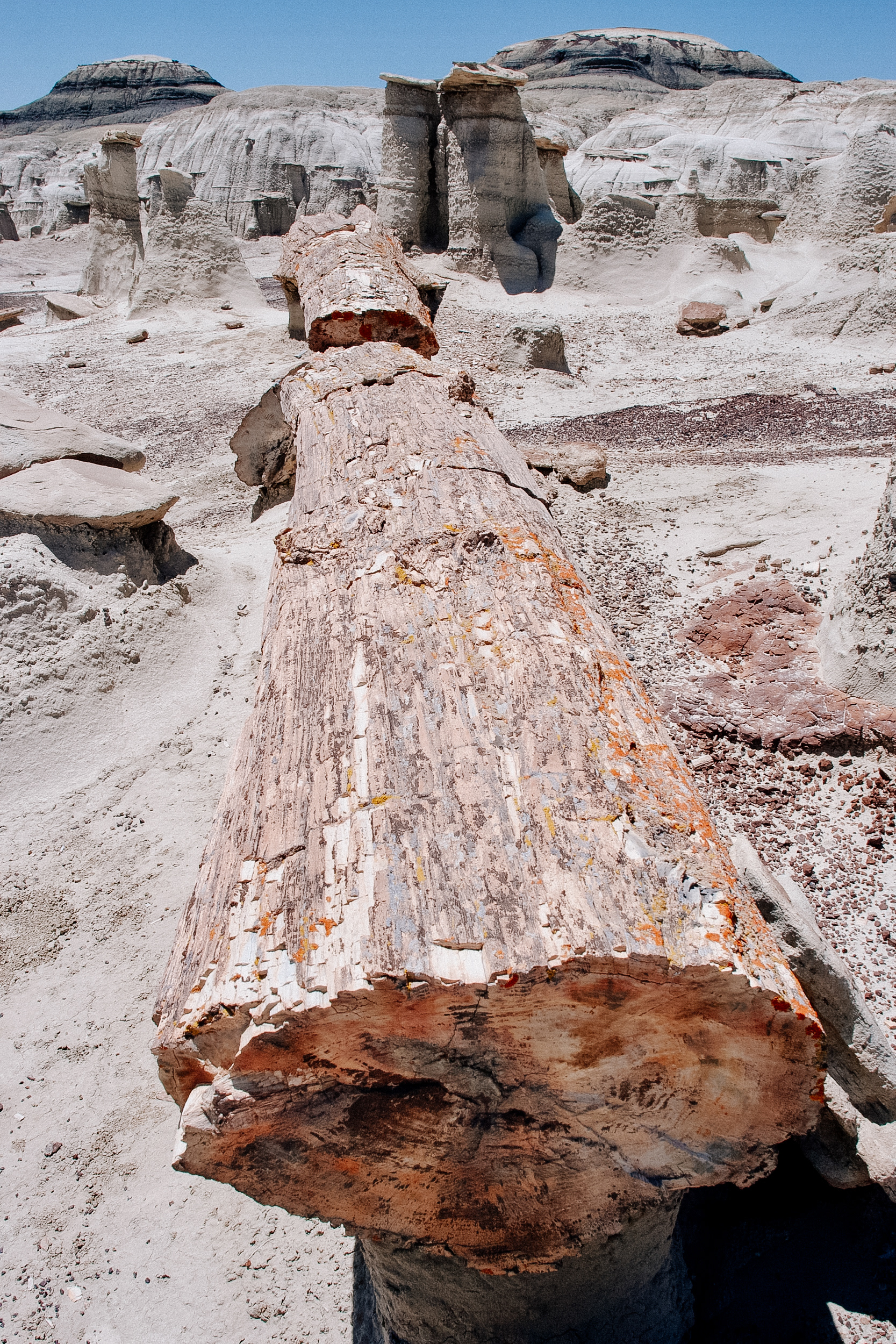
"The cracked eggs are giant egg shaped stone formations, which range from five to six-and-a-half feet long. They are the result of differential weathering—mudstone weathers faster than other sediments, causing the unusual formations to crack."
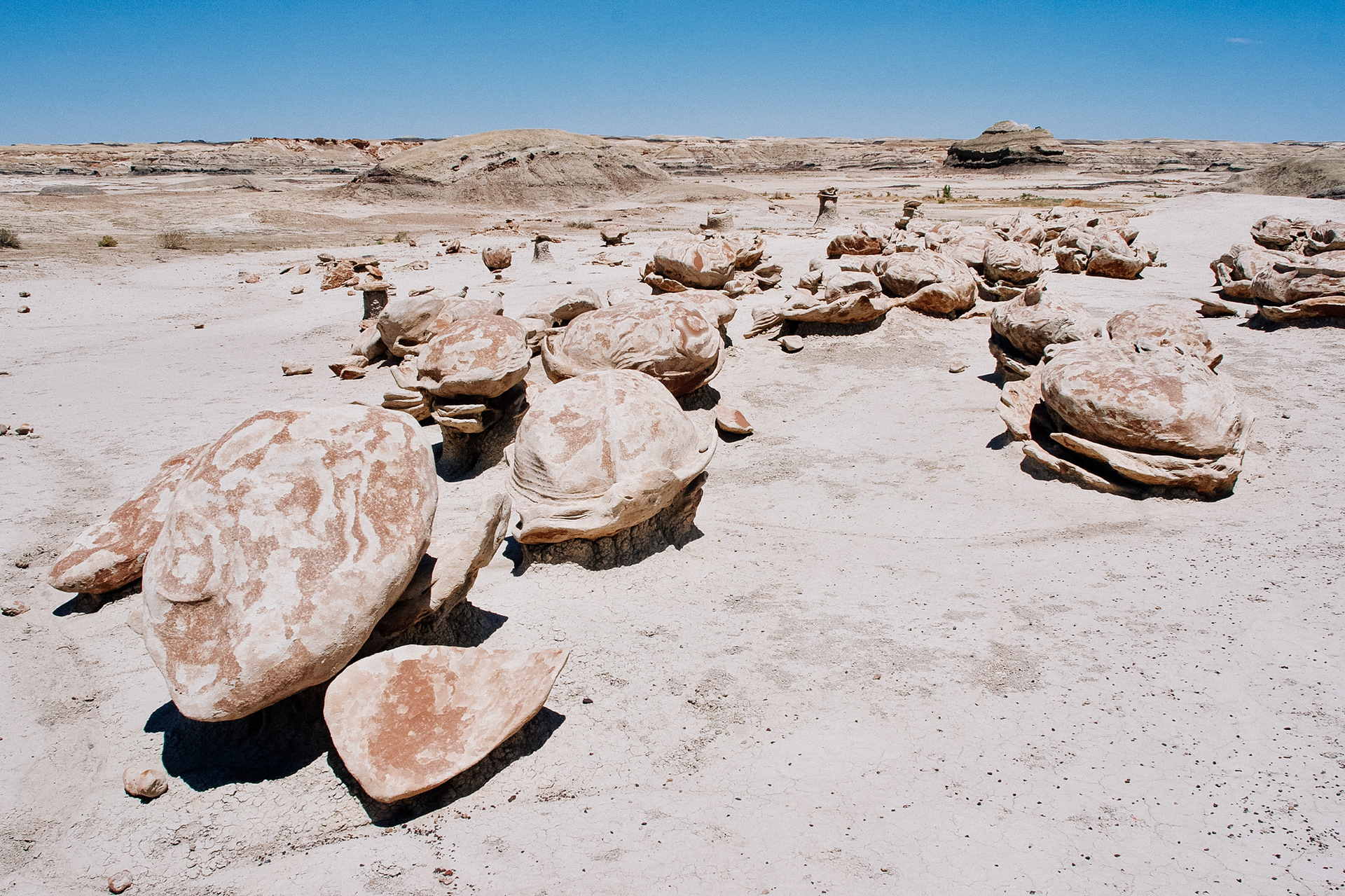
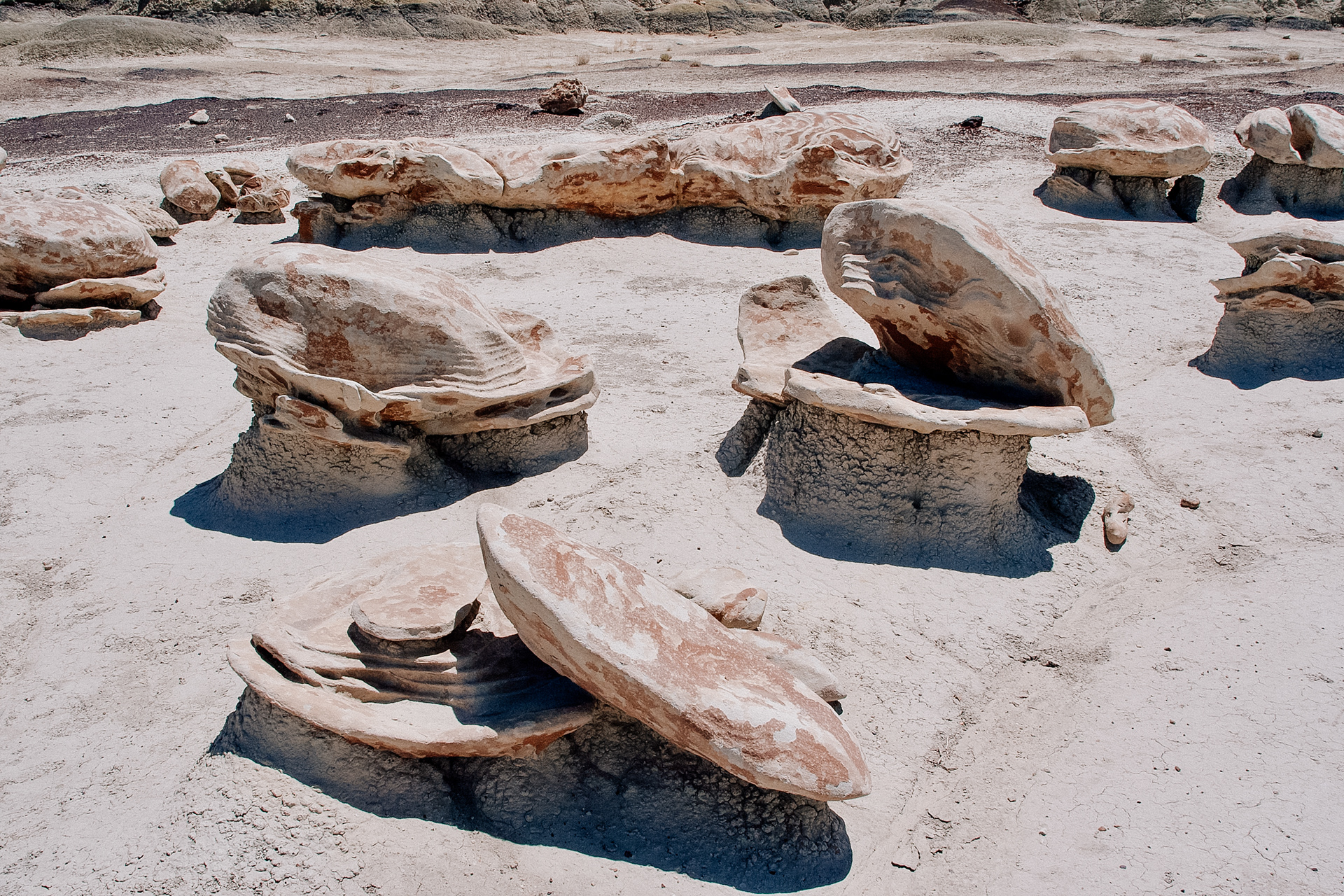
"And then there are the dinosaurs. Fossils—including dinosaur bones—have been found in the badlands, too. (…) Don’t jump to conclusions—though the huge eggs look like prehistoric creatures could have left them behind, their origins are entirely geological."
Text quotes are from an article pulished in The Smithsonian Magazine, March 2016. Photographs were taken in May, 2014.